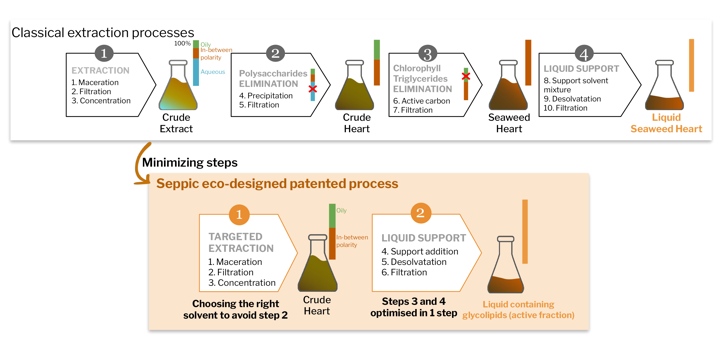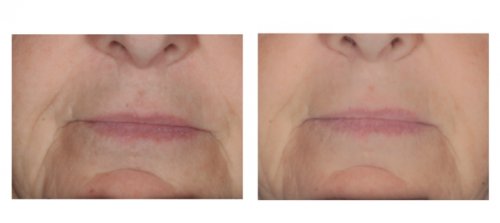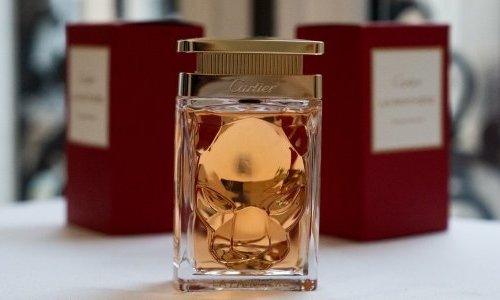Sagging skin, a rising concern
Skin sagging is a growing concern among the aging population. In fact, 67% of women are most concerned about this feature of facial aging, which can have a negative impact on the appearance of the face and accentuate signs of fatigue and stress.
Skin sagging is not only due to chronological aging, but also to gravity pulling the skin downwards. At the level of the skin, the dermo-epidermal junction becomes thinner, the mechanical properties in the dermis are reduced and there is less interaction between cells at the dermo-hypodermal junction.
As the skin gradually loses its elasticity and biomechanical properties, it loses its ability to resist gravitational force, resulting in the appearance of even looser skin on the lower part of the face and pronounced nasogenian folds.
Space, a source of inspiration
To better understand the effects of gravity, some experiments were made by researchers on the International Space Station [1]. It was shown that, in an environment without gravity, plants cannot grow vertically and lose their aerial structure. To maintain a coherent structure, these plants produce specific polar lipids called SQDGs. In plants, SQDGs play an important role by giving the plants structure. Seppic’s hypothesis based on this study was that these lipids may also have an effect on skin structure, increasing elasticity and firmness to help combat sagging.
“Coeur d’algue”, an eco-designed extraction process
Several seaweeds were studied to find the best source of SQDGs and Himanthalia elongata was found to be the richest.
Due to the polarity of SQDGs, it can be difficult to obtain an extract that does not contain the algae’s main pigment, chlorophyll. The main problem with chlorophyll is that it limits the incorporation of the active ingredients into a cosmetic formula, forcing formulators to reduce their use or find alternative formulations. Today, all natural extract decolourisation techniques require additional post-extraction steps.

The challenge in isolating the SQDGs from Himanthalia elongata was therefore to extract them specifically without the chlorophyll. To this end, Seppic developed a patented and eco-designed process called “Cœur d’algue” in two steps instead of the traditional four. This innovative technique in a minimum of steps allows to save time, energy and waste.
That’s how Seppic created its recently launched biomimetic ingredient, SAGACIOUS™.
An innovative global action targeting all skin layers
The global action of SAGACIOUS™ has been studied in vitro by stimulating key molecules on different skin layers: the dermo-epidermal junction, the dermis and the dermo-hypodermal junction.
Firstly, at the dermo-epidermal junction, the results showed a strengthening of the junction, allowing better cohesion between the two adjacent skin layers: the epidermis and the dermis. This leads to an improvement in the skin’s structural integrity and limits skin sagging.
In the dermis, SAGACIOUS™ was able to reinforce the mechanical properties of the skin, giving it the ability to stretch and snap back into place more easily, resulting in firmer skin.
Finally, the innovation lies in the dermo-hypodermal junction, where the results showed a strengthening of the mechanical properties of the deep dermis and hypodermis, with a more rigid junction and an increase in procollagen content for better cohesion.
Tested in vivo for 28 days, SAGACIOUS™ significantly improves skin firmness by 8 times compared to placebo. Its effect was also tested on the reduction of the visibility of nasogenian folds, showing a 7.1% reduction in visibility compared to placebo.

Fig 2: Reduction of the area of the nasogenian fold (left: before the study at D0, right: after 28 days of application)
In summary, SAGACIOUS™ targets the multi-level biological mechanisms involved in skin sagging, specifically the deep dermis and its interface with the hypodermis, to provide a global approach and effective anti-aging strategy to reduce lower facial sagging and improve skin firmness.






















